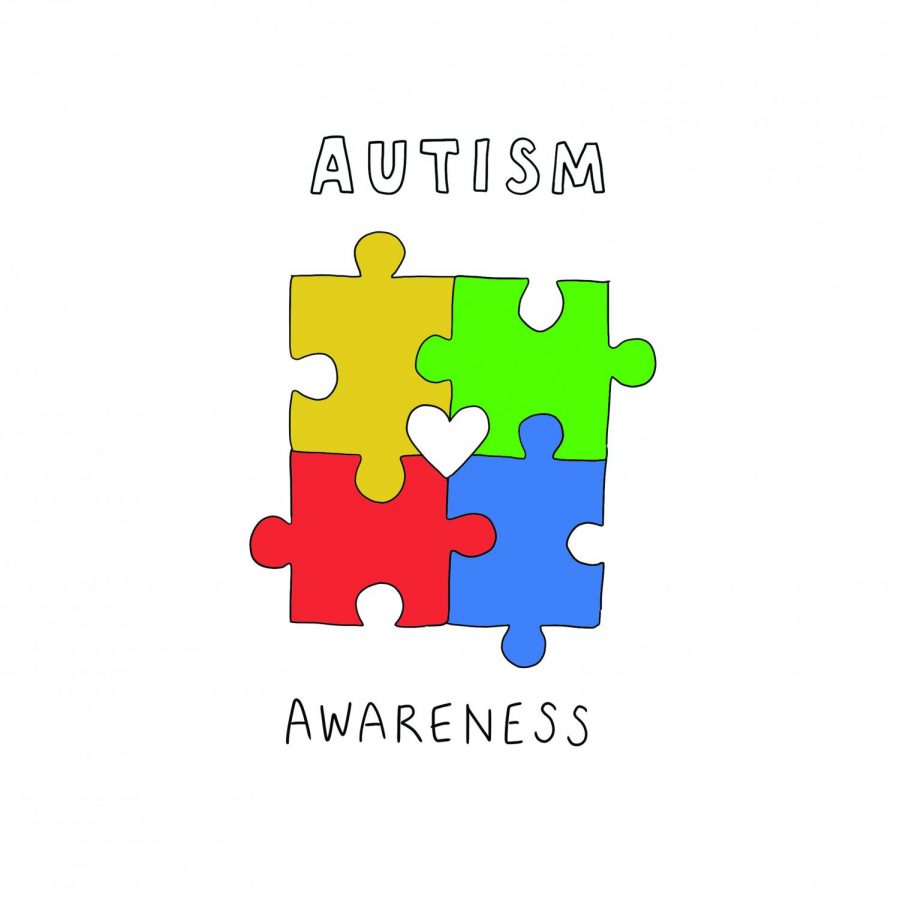Autism Representation Needs to Be Better
GRAPHIC ILLUSTRATION BY LARA FOLEY/THE OBSERVER
Poor representation of autism in the media isn’t just lazy: it’s damaging.
September 17, 2019
When you imagine an autistic person, whom do you picture? Maybe you immediately visualize a nerdy, socially inept teenager. He doesn’t make eye contact when he speaks, aces all his biochemistry exams and wears the same roomy sweatshirt everyday. Or perhaps you automatically and subconsciously reference Sheldon Cooper from “The Big Bang Theory,” or the mathematical savant Raymond from the film “Rain Man.”
If you’re a connoisseur of autistic pop culture, however, you might instead imagine the sweet, endearingly loquacious, penguin-loving Sam from Netflix’s original series, “Atypical.”
“Yeah,” you think to yourself, “I kinda know what autism is.”
But what about women? What about autistic people with linguistic talents or total disinterest in anything academic? What about autistic 13-year-old girls? Have you ever seen an example of what that person may look like? Why does nearly every depiction of autism in the media circulate around the trope of socially tactless, mathematically-inclined men?
The history of autism spectrum disorder is indisputably long, complicated and controversial. Today, the fifth edition of the Diagnostic and Statistical Manual of Mental Disorders differentiates between three different “levels” of autism. The first level is often colloquially known as Asperger’s syndrome, or, more broadly, high-functioning autism. Individuals with level one autism are defined as needing minimal support conducting their own independent lives. Individuals with level two or level three autism spectrum disorder are defined as needing more substantive support.
While all experiences of autism have specific struggles, the first level of autism spectrum disorder has been historically very difficult to identify due to its subtle symptoms, leading to the insidious maltreatment of certain autistic adults who are ostracized and bullied for their inability to masquerade as “neurotypical.”
Autistic women experience the same symptoms as autistic men but present these symptoms differently. For example, while an autistic woman may struggle with intuitively understanding social communication, she may learn early on in life to mimic the reactions and words of her peers to avoid perceived social faux pas, so is more able and willing to participate in social life. An autistic woman may realize she struggles to initiate and maintain social interactions with non-autistic people, but she may also recognize that if she follows a certain script of phrases, gestures and tones, the social interaction will be more successful. Through social masking and mimicry of neurotypical behavior, an autistic woman may hide her neurological differences.
As a result, autistic women may frequently engage in social interaction, while an autistic man whose masking skills are less developed may eschew conversational situations altogether. Her conversational skills, however, may seem superficial or be perceived as odd. If the autistic woman in question does not employ masking techniques to engage in conversation or social interaction with non-autistic people, then she may be labeled a “spazz,” “jerk” or “weirdo.” In reality, they have done nothing offensive; they simply existed in a neurotypical world as their autistic selves. Autistic women are socially ostracized anyway.
Because autistic women have the same symptoms as autistic men but different presentations of such symptoms, problems with social communication, repetitive and restricted behaviors, special interests, and issues with sensory integration tend to be chalked up to anxiety disorders or a certain “quirkiness.” The autistic woman’s experiences are interpreted as either her inability to deal with stress or character traits and flaws. A young woman with autism might not make eye contact; in most people’s eyes, she is just shy, and that’s okay, because young women are supposed to be demure, right?
When we portray most autistic people as men, it perpetuates the stereotype of autism as a male-specific disorder. Autistic women who, due to male-biased criteria for autism spectrum disorder, have never been evaluated for a diagnosis, assume they couldn’t be autistic and that they shouldn’t bother inquiring about a possible diagnosis (and the accommodations and support that come with one) because they don’t look or act like the autistic people they see in the media. These stereotypes have the direct effect of preventing autistic women from obtaining the diagnosis and support they deserve.
The reality of being an autistic woman in a neurotypical world is to be wedged unwillingly between the pillars of sexism and bigotry which question, belittle and villainize any move she makes. If an autistic woman is social, she is scrutinized for her often awkward or scripted social skills. “What a weirdo,” some think, the animosity they feel toward people who lack social conformity etched pertinently upon a raised eyebrow complimenting an unreasonable and unnecessary (yet so proud) frown.
If an autistic woman refrains from participating in social situations, her nonchalant or passive behavior causes her to be labeled either snobbish or reserved. If she is snobbish, then she overestimates her own worth and underestimates that of others, deciding they are simply not worth her time. If she is reserved, then her shyness is the effect of a lack of confidence, and this passivity is normal to many because women shouldn’t be assertive, right?
Herein lies the problem of representing autism as something mostly men experience: In order to advocate for autism acceptance and understanding, we must first learn to interpret autism as a diverse and widespread spectrum, affecting any person at any age in any gender from any ethnic group.
Rip off, like a Band-Aid, the stereotypes plastered on your wound of a lack of education concerning neurodiverse populations. Autistic people will not necessarily be nerdy young men with a predilection for computer programming. Autistic people are (and this is a real hot take) … people. They deserve the same respect and autonomy given to non-autistic people. If you seek to cultivate a more respectful and harmonious society that endorses a culture of respect for the diversity of the human race, then educate yourself about autism to effectively reject the stereotypes and prejudices surrounding the neurological difference.











